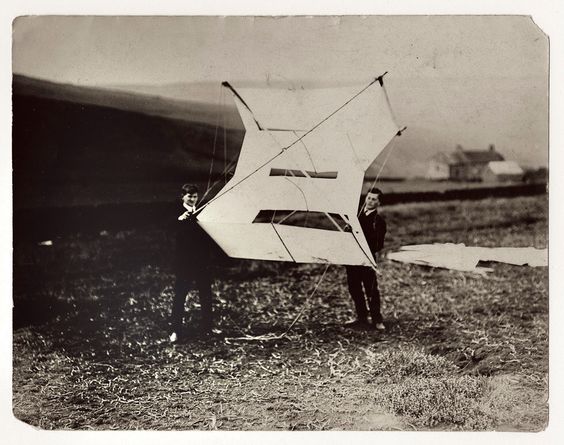The famed philosopher Ludwig Wittgenstein was also an early pioneer of jet-engine propellers.

Ludwig Wittgenstein is one of my favourite philosophers. That’s not surprising because much of his work was about language (my profession), games (my obsession), and what the intersection of the two can tell us about making philosophical meaning. But prior to his career in philosophy, Wittgenstein was an aeronautical engineer who designed and patented an innovative propellor design.
First, a note about helicopters. Why do most helicopters have a second, smaller rotor on their tail? The main rotor of a helicopter spins around in order to provide lift, but it also introduces torque: a force pushing the body of the helicopter in the opposite direction. It’s a reaction to the force of the rotor, like the recoil of a gun. The second rotor pushes against this force and prevents the helicopter from spinning in the opposite direction to the rotors.
Okay, jumping back to Wittgenstein. When he was a young man, Wittgenstein planned to design and build his own plane. In fact, in 1908 he enrolled in a doctorate at the University of Manchester with just this goal in mind. There, he conducted many aeronautical experiments (such as the kite flying pictured above) and patented a design for an entirely new type of aircraft propeller.
Rather than attaching the propeller to a spinning axis that was connected to an engine, Wittgenstein’s propeller pumped the fuel directly through the propeller to small engines at the end of each blade. This was quite a clever solution for a couple of reasons. The force from the propeller’s rotation compressed the fuel, leading to a hotter burn and stronger propulsion. Because the force was coming from the end of the propeller rather than a central spinning axis, such a propeller generated little to no torque.
Wittgenstein patented this design in 1911. Alas, materials at the time did not allow for Wittgenstein’s propeller to enter production, but in researching propeller design he got a taste for mathematics. That led to an interest in logic and philosophy, and so the same year that he patented the propeller Wittgenstein set off for the University of Cambridge with the intention of studying with Bertrand Russell.
That in itself is a funny story. Wittgenstein essentially gate-crashed Russell’s philosophy lectures, first coming across as an obsessive crank and then gradually earning Russell’s respect and admiration. Wittgenstein even asked Russell for career advice:
When he departed Manchester for Cambridge, Wittgenstein was to ask Bertrand Russell FRS whether he [Ludwig] was “a complete idiot or not – because if I am I shall become an aeronaut but if not I shall become a philosopher.” Russell in reply suggested that Ludwig write something on a philosophical subject. The resulting piece was sufficient for Russell: “No, you must not become an aeronaut.”
Wittgenstein’s Aeronautical Investigation
Wittgenstein went on to be a prominent and storied philosopher, and he never went back to aeronautics. His propeller idea found a second life in so-called “tip jet” helicopters, which have little jets at the ends of the propellers. Just as in Wittgenstein’s design, these helicopters don’t generate torque and so do not require a second small rotor – although some include it anyway to make steering easier.
2 Replies to “Wittgenstein’s propellers”